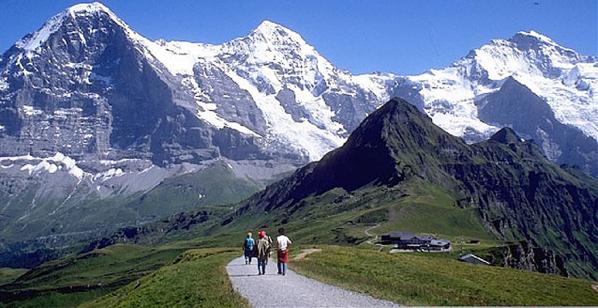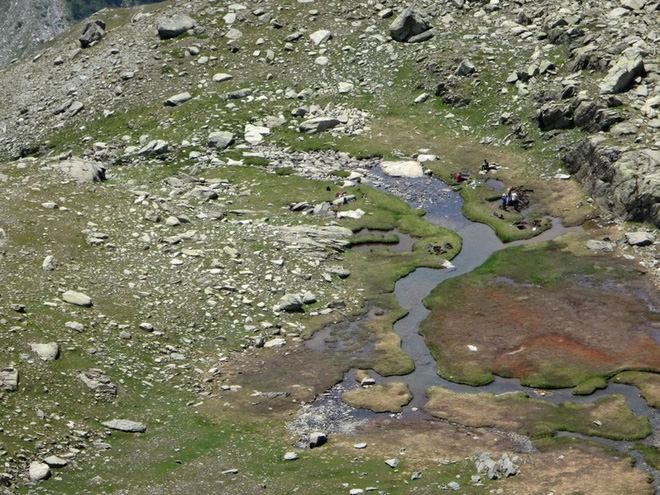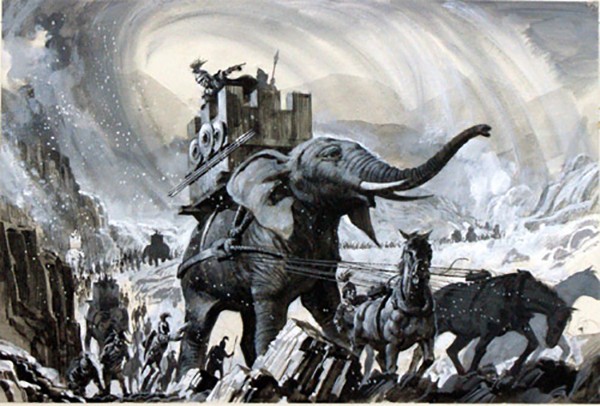In 218 BC, the famous Carthage general Hannibal, with 38,000 infantry, 8,000 cavalry and 37 war elephants, crossed the Alps, setting up a miracle with “1-0-2” in the ‘history.
After thousands of years of hard work, scientists have not been able to give an exact answer on the route that the famous Grandmaster Hannibal and his cavalry crossed the Alps (Alps).
Now, however, everything has been “clarified”. All thanks to modern science and one important factor is … ancient horse manure.
The Alps
The Alps are one of the largest and longest mountain ranges in Europe, crossing 7 countries including Austria, Slovenia, Italy, Switzerland, Liechtenstein, Germany and France.
The mountain range likely formed at the end of the Kreta period, when the African and Eurasian plates stretched from southern Europe and Asia, from the Atlantic to the Himalayas.

Alps – One of the longest mountain ranges in Europe.
The collision causes the marine sedimentary rocks to be lifted by fracturing and rippling activities that form high mountains such as Mont Blanc and Matterhorn.
Mont Blanc is the highest mountain in the Alps with an altitude of 4,810m, located along the Franco-Italian border, the Alps are mainly high mountain peaks of around 4000m, so people often call them the name ” four thousand “.
The Alps have a crescent-shaped structure, 800 km long from east to west and 200 km wide. The average altitude of the peaks is 2.5 km.
An Italian organization called SOIUSA, based on geological elements and topographic maps, divides the Alps into the Ligurian Alps, Maritime Alps, Cottian Alps, Dauphine Alps, Graian Alps, Pennine Alps, Bernese Alps, Lepontine Alps, Glarus Alps and Alps of Appenzell.
The altitude and size of the mountain range are influenced by the climate of Europe: in high mountains, rainfall fluctuates constantly, and climatic conditions depend on certain regions.
The fauna lives at an altitude of around 3400 m and the plants are scattered at different altitudes. Evidence of human life in the Alps may be present during the Paleolithic era.
A mummy dating back around 5,000 years was found on an Austro-Italian border glacier in 1991.
In 1800, Napoleon crossed one of the Apls mountains with 40,000 soldiers. The 18th and 19th centuries were the start of a wave to conquer the mountains of the Alps.
During World War II, Adolf Hitler also erected a bunker in the Bavarian Alps during the war.
And of course, we can’t help but mention a miracle that happened on this longest mountain range in Europe during the Second Punic War (218 BC). It was the fact that General Hannibal was leading a great army across the majestic Alps.
General Hannibal’s “utopian” journey across the Alps
Hannibal Barca (247 – 183 BC) was a general and military tactician of the Carthage Empire. His name Hannibal means “the joy of the god Baal” – god in the religion of Carthage, and the surname Barca means “lightning”.
 Portrait of the outstanding military man Hannibal.
Portrait of the outstanding military man Hannibal.
He is famous for his victories in the Second Punic War (218-201 BC) – one of the three wars between ancient Rome and Carthage.
Hannibal is one of the greatest generals in ancient history. He is a general with an excellent strategic vision, flexible and creative in the implementation of actions to achieve the objectives set.
This general left the world of military art with a great deal of experience in strategy and combat tactics.
Particularly during this period, he led an army, made up of 38,000 infantry, 8,000 cavalry and 37 war elephants from Iberia across the Pyrenees and the Alps to northern Italy.
This is one of the military’s most remarkable achievements in ancient warfare, as the Alps are seen as a seemingly insurmountable natural frontier.

Hannibal with his war horse and war elephant crossed the Alps.
And after more than 2,000 years of history, historians have constantly studied the path taken by the Legion, but there is still no solid evidence.
A team of researchers from York University in Toronto, Canada, led by Professor Bill Mahaney, has finally provided positive evidence of the path taken by the military.
They assumed the group had passed the Col de Traversette pass. This narrow pass is located between a series of mountain peaks located on the southeast border of Grenoble, France and southwest of Turin, Italy.

The Col de Traversette is located in the Alps.
These results were published in the journal Archaeometry.
The Col de la Traversette is about 3000 m above sea level. To this day it is still a difficult gravel road.
In fact, a century ago, British scientist-biologist Sir Gavin de Beer hypothesized that this route was where the army would pass. However, it received almost no consensus from other researchers.
At that time, many scientists favored the Col du Clapier route, at an altitude of around 2400 m and further north, but it was less dangerous.
This hypothesis is mainly proposed in the writings of ancient and modern historians of Livy. He lived in Padua around 200 years after this historic event.
However, in his entire life, he never officially went once to where he believed Hannibal and his army had passed.
Therefore, it can be said that what he recorded about this event was not reality, but only fiction.
Define this course with … horse manure
Using technology that integrates analysis of genetic microbiology, analysis of environmental chemicals, pollen, and other geographic techniques, scientists are discovering large amounts of animal feces – possibly horse manure – near the Col de Traversette.
Through analysis of carbon isotopes, researchers determined that the feces date back to around 200 BC.
These piles of excrement were found in the swamps. Maybe the animals were in the quagmire to bathe.

Quagmire on the Traversette line.
The site was originally discovered during the site’s geological expedition, illustrating the topographical forms of the area, including rock and snow landslides. This coincided with the difficulties that General Hannibal had to overcome.
After analyzing the feces found, we found that most of this feces belonged to the Clostridia group of bacteria – a genus of Gram-positive bacilli, belonging to the Firmicutes branch. It is also the main bacterium in horse manure (around 70%).
Elsewhere, Clostridial levels appeared to be lower. Scientists were able to identify the bacteria because they were able to establish a specific gene sequence for the microorganism.

Discovering General Hannibal’s “impossible” journey thanks to … horse manure
Researchers say these bacteria have not been altered in the soil and have been alive for thousands of years.
The question arises: why did the talented military man of the Carthage Empire choose a difficult path to take? Want to create miracles? Or does this exceptional general have no other choice?
Probably the best choice for him and the cavalry back then, when the Romans watched and threatened Carthage day and night.
At this time, Hannibal chose to cross the Traversette Pass to avoid a sudden ambush from a tribe named Gauloise in the region.
This discovery is interesting, isn’t it? However, it is not yet entirely certain whether it is the bacteria that come from horse manure, and if it is human faeces?

Le général Hannibal célèbre pour son affirmation: “Nous trouverons ou créerons un chemin”.
Si des conclusions sont souhaitées, les analyses génétiques doivent élargir le public avec d’autres gènes.
Et les scientifiques travaillent également sur un vaste programme de recherche étudiant d’autres échantillons bactériens prélevés dans le bourbier de Traversette, dirigé par le professeur Chris Allen.
Ils ont également constaté que les œufs du micro-organisme parasite – qui incorporent des bactéries du ténia dans l’intestin – existent encore pendant une courte période comme des coquilles de capsule génétique.
Avec ces informations, les scientifiques espèrent démêler l’émergence des chevaux de guerre, des éléphants de guerre et des humains dans la zone marécageuse de Traversette il y a plus de 2000 ans.
En effet, avec de plus amples informations génétiques, nous pouvons être plus précis sur les origines et peut-être même les origines géographiques de certains de ces anciens monstres par comparaison avec des études. autres recherches microbiologiques.
https://khoahoc.tv/


